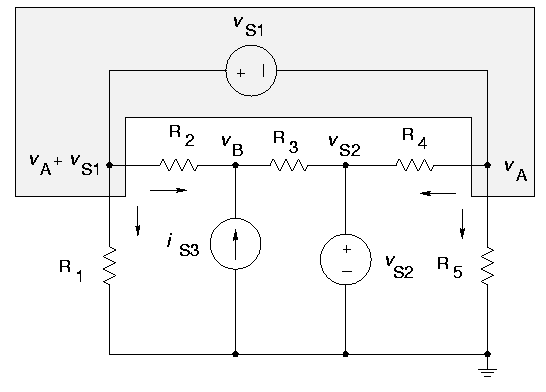- (a)
- If one end of a voltage source is connected to ground, label the other end of the voltage source with the actual voltage (vS2 below).
- (b)
- If there is a voltage source not connected to ground, label the - end
with a letter (vA below), and label the + end with the voltage at the
- end plus the voltage of the source (
vA + vS1 below). This is
called a
Supernode .
where iOUT is written in terms of node voltages (e.g.,
The nodal equation for node B below is
or
-vA G2 + vB (G2 + G3) = iS3 + vS1 G2 + vS2 G3
- (a)
- For nodes of the form of 1(a) there is no need to write KCL since the voltage is already known.
- (b)
- For nodes of the form 1(b) write one KCL for both ends of the voltage
source. For example:
The nodal equation for vS1 is
vA G5 + (vA - vS2)G4 + (vA + vS1) G1 + (vA + vS1 - vB) G2 = 0
or
vA (G1 + G2 + G4 + G5) - vB G2 = vS2 G4 - vS1 (G1 + G2)
